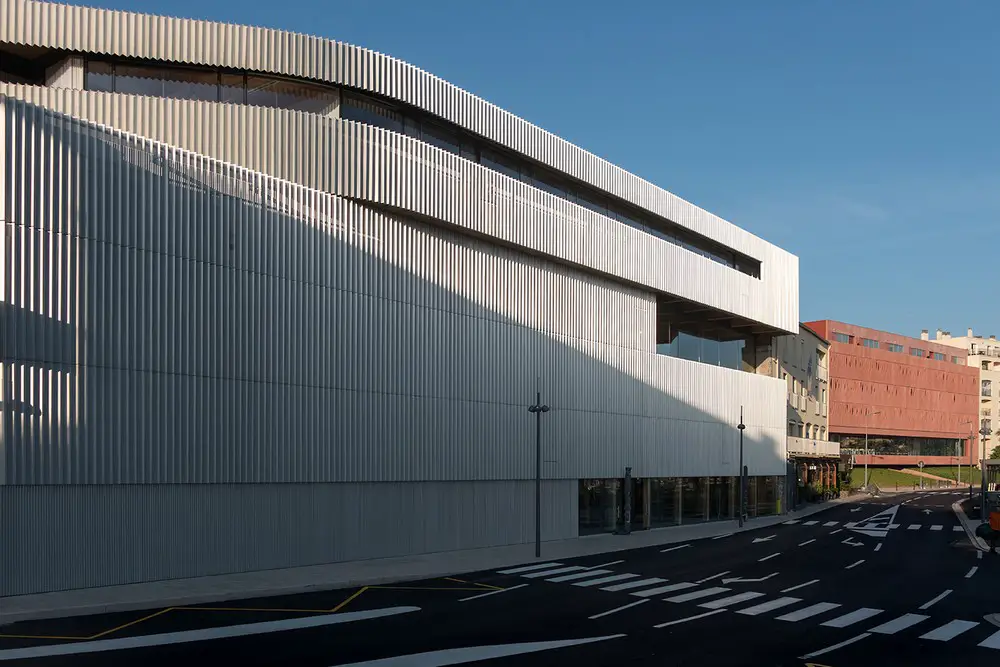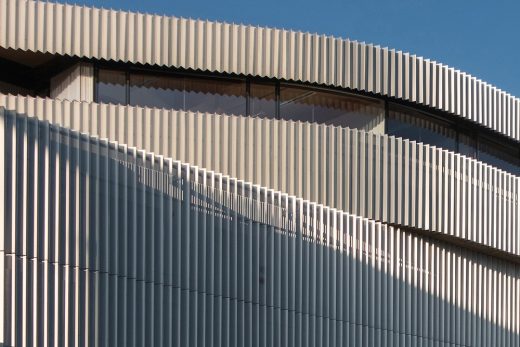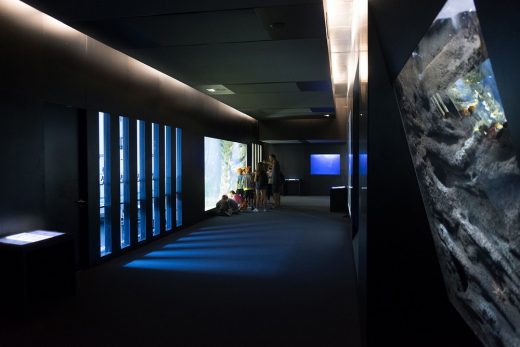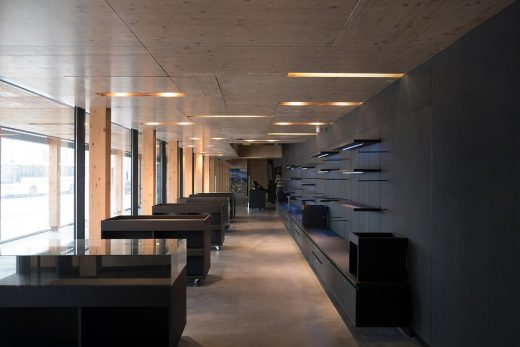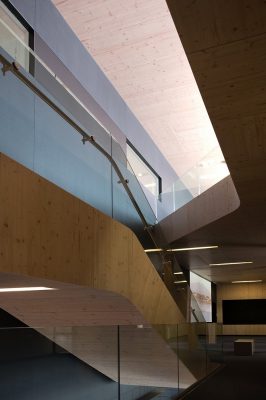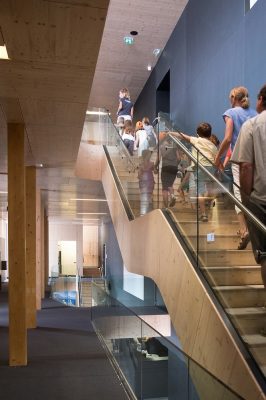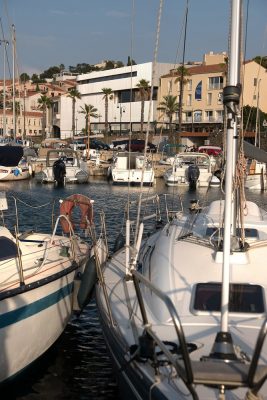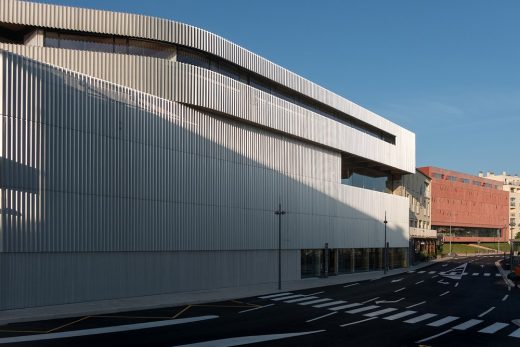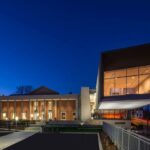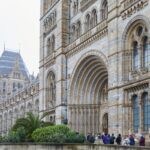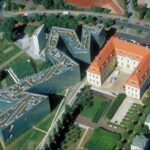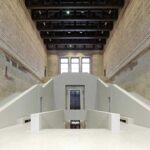Biodiversarium, Banyuls-Sur-Mer Architecture, French Learning Facility Building, Images
Biodiversarium in Banyuls-Sur-Mer
Aquariums and Research Laboratories Building, southeast France – design by Tectoniques
26 Oct 2017
Biodiversarium
Architects: Tectoniques
Location: Banyuls-Sur-Mer (66), France
Biodiversarium
Sea view
The port of Banyuls-Sur-Mer provides a unique setting for exploring and better understanding the marine biodiversity of the Pyrénées Orientales region. It is home to an extraordinarily abundant marine nature reserve, covering 650 hectares under the sea. On the land, the bay is dominated by an ocean observatory built in 1882, originally known as the “Laboratoire Arago”. Today, it is a major research centre, a facility for shared by the merged Pierre and Marie Curie and Sorbonne Universities (over 200 researchers), backed by the Pierre Fabre pharmaceutical and cosmetics firm.
The Biodiversarium was intended as a new showcase for the institution. It occupies a site formerly taken up by student-researcher accommodation which has been demolished and rebuilt on a neighbouring site by the architects Fernandez and Serres.
The two projects, of similar dimensions, both similarly positioned facing the port, now form a contemporary pairing which updates and revitalises the Banyuls landscape.
Sandwiched between the cliffs and the quayside, the Biodiversarium is built on an exceptional, but severely constrained, site. The limited construction space requires a dense, compact building which is transcended by its seafront location.
The complex nature of the programme and the stated objective of not creating anything overly spectacular on a site that is already home to an eclectic range of architectural styles, led to the creation of an abstract, silent form. Only its skin of perforated aluminium pleats, with an iridescent tint that changes with the sunlight, expresses any sort of singularity and piques the curiosity of the general public.
White rooms and dark rooms
The Biodiversarium houses a singular programme divided into two distinct worlds. The first is represented in the space open to the general public, presenting the marine fauna and flora of the Mediterranean biotope and the laboratory’s research findings. Around twenty aquariums of varying sizes (150,000 litres of water) with accompanying multimedia tools, create an entertaining and education scenography, particularly attractive to young people and school children. These are mainly composed of dark rooms.
In addition, the building is home to the less familiar world of research. The researchers’ work spaces are mostly laboratories, composed of clean rooms with natural lighting. They benefit from fantastic sea views and are mainly situated on the top floor.
Between the two, glass partitions allow visitors to see the lab work in progress. There are even spaces where the general public can meet with researchers to share their experiences. The educational workshops which take place in the multi-purpose room are just one example of this.
A wooden set-square on a concrete box
This binary division is also present in the technical aspects of the building, the project being composed of a concrete box covered with a wooden set-square. The concrete box, which faces the cliff, contains the heaviest parts of the project. It houses the laboratories, a company incubator open to young researchers, an e-learning space, a conference hall and the aquariums. The wooden set-square (glulam column-beams) on the other hand, contains the lightest, most transparent components. The vertical section, on the side nearest the sea, contains the staircase and walkways for the general public which are very open spaces, with windows on the port side. The top floor is entirely occupied by the dual-aspect laboratories.
The aquariums
The aquariums take up three floors across a strip 11 metres wide. The visit takes you on a dive into the depths of the ocean. This plunge into the deep is emphasised by the very dark, sombre atmosphere. This is compensated by the softer feel of the spruce panels which line the corridors. Framed views of the sea create intermittent flashes of light.
In terms of the scenography, interactive, modular systems create visits which run parallel to the aquariums. The aquariums are set flush to the wall, creating the effect of living paintings.
The aquariums are supplied with sea water heated geothermally.
The decor were produced by the Ateliers Coutant based in La Rochelle. The artist firstly sculpts them in concrete resin in successive layers. After dyeing, the sculptures are plunged into the water and progressively colonised by natural vegetation which takes a certain amount of time to acclimatise. Finally, the fish are introduced progressively. The general public only discovers the aquariums several months later.
A facade in motion
One of the original features of this building is its single north-facing facade, looking out to the sea. It is slotted into the quayside, between two existing buildings and is delimited at the back by the rock cliff face. As previously mentioned, this unique facade is characterised by its anodized aluminium skin. It has the benefit of being resistant to the corrosive force of the sea salt, and also acts as a filter screen offering solar protection and creating a backdrop for the scenography.
The micro-perforations across the whole facade create a one-way mirror effect. From inside the building, visitors look out through a transparent surface, whilst from the outside it is practically opaque. The opposite occurs at night, revealing a more organic presence, opening out onto the public space a certain depth and complex, interwoven forms.
The project’s curves and the iridescent finish to the anodized aluminium are a subtle reference to the marine environment and establish a physical link with the surrounding nautical architecture and the boats in the port.
In this setting, the lines of boats, floating the length of the quay, ordered by size and category, form a forest of masts and ropes which enriches the architectural landscape, more authentic and more inspiring than the neighbouring neo-traditional constructions in the Provence style.
Biodiversarium – Building Information
Ground floor
Reception / information / projections hall
Reception / ticket office / cloakroom
Aquarium gift store
Offices for aquarium staff
Quarantine zone
Filtration and sea water/fresh water exchangers
Rearing laboratories: fish, Ascidians, Oikos, sea urchins, larvae, zebrafish.
Heating
Floor 1
Aquarium gallery:
Posidonia tank
Coralligenous tank
Shipwreck tank
Canyon tank
Grouper tank
Pelagic tank
Prey culture laboratories with guided visits.
Interactive platform: exhibition, projections, binocular magnifiers, microscope, interactive 3D sphere, projection /discussion space,
Educational / conference hall
Rearing zone (visible to the general public)
Offices for aquariology staff
Diving room
Rearing laboratories
Floor 2
Ray wave tank
Pondlife tank
Panel tanks
Mimicry tank
Jellyfish tank
Seahorse tank
Touch tank
Company incubator laboratories
Biology and bacteria culture laboratories (visible to the public)
Culture rooms
Floor 3
Research laboratories: chemistry, biomolecules, cell culture, electrophobic
Researchers’ offices.
Programme name: Biodiversarium
Address: Banyuls-Sur-Mer (66), France
Lead architects, engineers and economists: Tectoniques
Associate architects: Architecture et environnement
Wood Structure: Anglade Structures Bois
External works, carcass works, fluids: IGBAT
Aquariums: ITF / Ateliers Coutant
Environment: Indigo
Building control: Veritas
Health and Safety coordination: Socotec
Total floor area: 2400 sqm
Budget: €7.4 m ex.VAT
Main materials:
Mixed structure, concrete shell on wooden frame
Interior floors made of prestressed concrete and CLT panels
Exterior walkways in anodized aluminium
Interior cladding made of three-play spruce panels
Perforated anodized aluminium cladding, custom bent.
Photographs: Tectoniques
Biodiversarium in Banyuls-Sur-Mer images / information received 261017
Location:Banyuls-Sur-Mer, France
New Buildings in France
French Architectural Projects
French Architect Offices – design firm listings
Museum Buildings in France – Selection
Musée des Beaux-arts Reims, northeast France
X-TU Architects
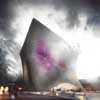
image from architects
Musée des Beaux-arts Reims
Lille Metropole museum
Manuelle Gautrand
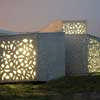
photo : Max Lerouge
Lille Metropole museum
Musée du quai Branly, Paris
Jean Nouvel Architect
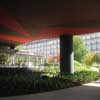
picture © Adrian Welch
Musée du quai Branly
Paladru Archaeology Museum and Park
Hérault Arnod Architectes
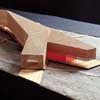
image © André Morin
Paladru Archaeology Museum
Buildings by Foster + Partners in France – Selection
Marseille Vieux Port Masterplan, southern France
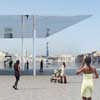
image : Foster + Partners
Marseille Vieux Port Masterplan
Millau Viaduct
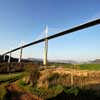
photo © Nick Weall
Millau Viaduct
Carré d’Art Building
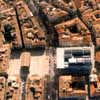
photo : Nigel Young, Foster & Partners
Carre d’Art Nimes
Zenith Saint-Etienne Building
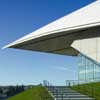
photo : Nigel Young
Zenith Saint-Etienne Building
Comments / photos for the Biodiversarium in Banyuls-Sur-Mer page welcome
Biodiversarium in Banyuls-Sur-Mer
– page
